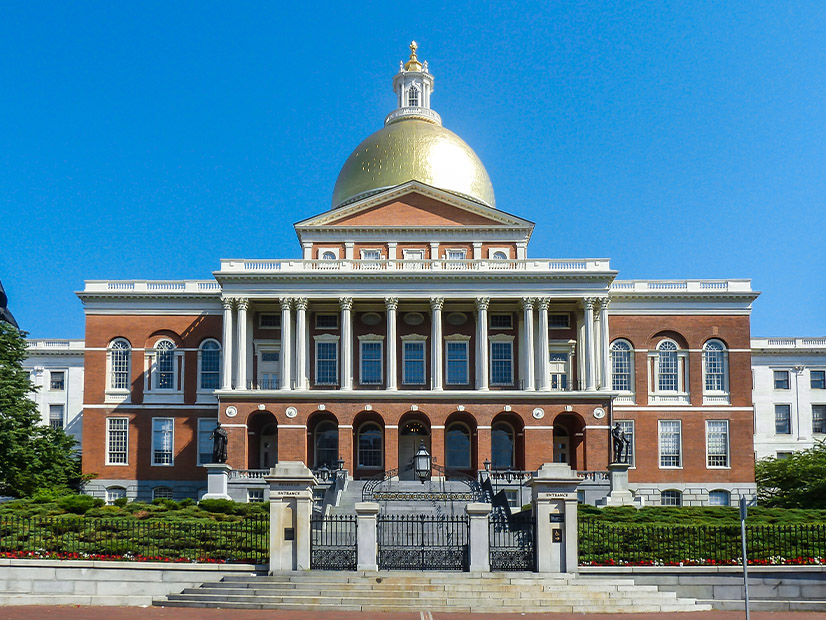Massachusetts on Friday issued its first-ever “Climate Report Card,” finding that all of the state’s sectors are “on track” for their 2025 decarbonization targets.
The inaugural report from Gov. Maura Healey’s (D) administration measured decarbonization efforts in the transportation, buildings, electricity, and natural and working land sectors. The finding is based on some unexpected progress in the deployment of clean energy technologies and the assumption that will continue to accelerate in the coming years.
But the report also highlighted the challenges to cutting emissions. According to the state’s greenhouse gas inventory, transportation and buildings are the two largest sources of carbon emissions in the state, responsible for 37% and 35%, respectively, of the state’s total emissions.
The report card noted there were more than 70,000 light-duty electric vehicles in the state in 2022. Massachusetts’ Clean Energy and Climate Plan (CECP) models the state will need 200,000 total EVs by 2025 and 900,000 by 2030.
The state also has a long way to go on public vehicle charging infrastructure: It has nearly 6,500 charging ports but will need to increase this number to 15,000 by 2025 and 75,000 by 2030, according to the CECP estimates.
The report cited high interest rates, inflation and supply chain constraints, along with grid capacity limitations, as some of the challenges to rapidly electrifying transportation in the state. Other barriers include EV affordability, access to home chargers and public transportation accessibility.
For the buildings sector, the report card found heat pump deployment has accelerated in recent years, noting nearly 30,000 heat pumps have been installed through the state’s Mass Save energy efficiency program from the start of 2020 through the first half of 2023. The CECP estimates the state needs to install 100,000 heat pumps between 2020 and 2025, increasing to an average of 100,000 annual installations between 2025 and 2030.
But the report card noted installations through Mass Save have surpassed expectations, and the state is “at about 30% of [its] 2025 target even before accounting for installations outside of Mass Save such as those done within municipal light plant territories.”
“Despite these early successes, sharp increases are needed to meet the state’s building sector targets,” the report added. It noted that energy efficiency and demand-control measures are essential to limiting the pressures electrification puts on the grid.
The report card said Mass Save’s focus on cost savings may need to be reformed to increase the number of customers switching from natural gas heating to heat pumps. It also highlighted the difficulties of building decarbonization for old buildings and rental units, along with the need for a larger HVAC and weatherization workforce.
While the power sector is responsible for increasingly less emissions in the state, the report called it “the linchpin of all other GHG-reduction strategies,” adding that “without substantial additions of clean energy, the transition to electric vehicles and building heating and cooling will not result in adequate GHG reductions.”
Although natural gas remains the dominant source of power in the region, the report said clean energy sources accounted for 48.2% of the state’s electricity. It noted there was 113 MW of wind capacity and 3,325 MW of solar capacity in the state in 2020. The CECP estimates wind needs to increase to 180 MW by 2025 and 3,650 MW by 2030. The 2030 target likely will rely heavily on the successful deployment of offshore wind.
The state cited the same challenges to transportation electrification as barriers to offshore wind deployment, along with the need for additional transmission to interconnect new renewables. Other issues highlighted include permitting and siting, infrastructure cost allocation and increasing peak demands.
Additionally, the report noted “revenues that can be earned through existing energy market structures are not certain enough to facilitate long-term financing of new generation outside of state-run procurements for clean energy.”
It added that utility incentives may need to be reconsidered to get the most out of the existing infrastructure. “Utilities are incentivized to build new infrastructure as opposed to optimizing use of the existing electric grid, managing demand or encouraging distributed resources.”
“As Massachusetts makes progress and faces challenges in implementing our climate vision, it’s important that we follow the science and stay transparent about our progress,” Secretary of Energy and Environmental Affairs Rebecca Tepper said in a press release.


